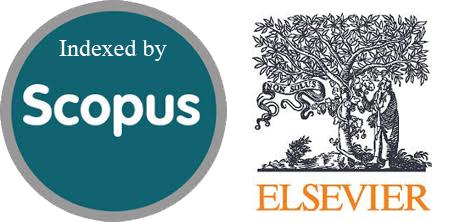Future of Engineered Phage Therapy for Clostridium difficile Infections
DOI:
https://doi.org/10.54133/ajms.v5i.161Keywords:
Bacterophage, CRISPR-Cas systems, Clostridioides difficile, Clostridium difficile infection (CDI)Abstract
Bacteriophages have the potential to eliminate both antibiotic-resistant and sensitive bacteria; as a result, they have become a major focus of such research. In contrast to antibiotics, which assault the entire bacterial population without discrimination, bacteriophages have a limited set of characteristics that allow them to target infectious microbes while avoiding friendly species (commensal microbiota). Nevertheless, large groups of naturally occurring bacteriophages that are well-differentiated and selective for the most clinically recognized pathogenic bacterial strains are required. Utilizing genetic engineering techniques that modify the target phage genome to synthesize phages with known characteristics in a brief period of time and at a low acquisition, characterization, and treatment cost. Clostridioides difficile is the leading cause of nosocomial acquired diarrhea, causing approximately 500,000 cases of Clostridium difficile infection (CDI) and nearly 29,000 deaths annually in the United States. Vancomycin is the most commonly used antibiotic to treat CDIs, and it is believed that it contributes to the disturbance of the gut microbiota, resulting in diminished colonization resistance against CDI and increased recurrence rates. This article provides a concise summary of existing CRISPR-Cas systems that can be utilized to create a lytic phage as a potential treatment for CDIs. While further study is needed, phage therapy appears to be a promising and perhaps more sustainable approach to preventing severe CDIs.
Downloads
References
Bergh O, Børsheim KY, Bratbak G, Heldal M. High abundance of viruses found in aquatic environments. Nature. 1989;340(6233):467-468. doi: 10.1038/340467a0. DOI: https://doi.org/10.1038/340467a0
Wittebole X, De Roock S, Opal SM. A historical overview of bacteriophage therapy as an alternative to antibiotics for the treatment of bacterial pathogens. Virulence. 2014;5(1):226-235. doi: 10.4161/viru.25991. DOI: https://doi.org/10.4161/viru.25991
Viertel TM, Ritter K, Horz HP. Viruses versus bacteria-novel approaches to phage therapy as a tool against multidrug-resistant pathogens. J Antimicrob Chemother. 2014;69(9):2326-2336. doi: 10.1093/jac/dku173. DOI: https://doi.org/10.1093/jac/dku173
Salmond GP, Fineran PC. A century of the phage: past, present and future. Nat Rev Microbiol. 2015;13(12):777-786. doi: 10.1038/nrmicro3564. DOI: https://doi.org/10.1038/nrmicro3564
Chanishvili N. Bacteriophages as therapeutic and prophylactic means: Summary of the Soviet and Post-Soviet experiences. Curr Drug Deliv. 2016;13(3):309-323. doi: 10.2174/156720181303160520193946. DOI: https://doi.org/10.2174/156720181303160520193946
Domingo-Calap P, Delgado-Martínez J. Bacteriophages: Protagonists of a post-antibiotic era. Antibiotics (Basel). 2018;7(3):66. doi: 10.3390/antibiotics7030066. DOI: https://doi.org/10.3390/antibiotics7030066
Venhorst J, van der Vossen JMBM, Agamennone V. Battling enteropathogenic Clostridia: Phage therapy for Clostridioides difficile and Clostridium perfringens. Front Microbiol. 2022;13:891790. doi: 10.3389/fmicb.2022.891790. DOI: https://doi.org/10.3389/fmicb.2022.891790
Schooley RT, Biswas B, Gill JJ, Hernandez-Morales A, Lancaster J, Lessor L, et al. Development and use of personalized bacteriophage-based therapeutic cocktails to treat a patient with a disseminated resistant Acinetobacter baumannii infection. Antimicrob Agents Chemother. 2017;61(10):e00954-17. doi: 10.1128/AAC.00954-17. DOI: https://doi.org/10.1128/AAC.00954-17
Francino MP. Antibiotics and the human gut microbiome: Dysbioses and accumulation of resistances. Front Microbiol. 2016;6:1543. doi: 10.3389/fmicb.2015.01543. DOI: https://doi.org/10.3389/fmicb.2015.01543
Martel B, Moineau S. CRISPR-Cas: an efficient tool for genome engineering of virulent bacteriophages. Nucleic Acids Res. 2014;42(14):9504-9513. doi: 10.1093/nar/gku628. DOI: https://doi.org/10.1093/nar/gku628
Ando H, Lemire S, Pires DP, Lu TK. Engineering modular viral scaffolds for targeted bacterial population editing. Cell Syst. 2015;1(3):187-196. doi: 10.1016/j.cels.2015.08.013. DOI: https://doi.org/10.1016/j.cels.2015.08.013
Lemay ML, Tremblay DM, Moineau S. Genome engineering of virulent Lactococcal phages using CRISPR-Cas9. ACS Synth Biol. 2017;6(7):1351-1358. doi: 10.1021/acssynbio.6b00388. DOI: https://doi.org/10.1021/acssynbio.6b00388
Kilcher S, Studer P, Muessner C, Klumpp J, Loessner MJ. Cross-genus rebooting of custom-made, synthetic bacteriophage genomes in L-form bacteria. Proc Natl Acad Sci. 2018;115(3):567-572. doi: 10.1073/pnas.1714658115. DOI: https://doi.org/10.1073/pnas.1714658115
Selle K, Fletcher JR, Tuson H, Schmitt DS, McMillan L, Vridhambal GS, et al. In vivo targeting of Clostridioides difficile using phage-delivered CRISPR-Cas3 antimicrobials. mBio. 2020;11(2):e00019-20. doi: 10.1128/mBio.00019-20. DOI: https://doi.org/10.1128/mBio.00019-20
McDonald LC, Gerding DN, Johnson S, Bakken JS, Carroll KC, Coffin SE, et al. Clinical practice guidelines for Clostridium difficile infection in adults and children: 2017 Update by the Infectious Diseases Society of America (IDSA) and Society for Healthcare Epidemiology of America (SHEA). Clin Infect Dis. 2018;66(7):e1-e48. doi: 10.1093/cid/cix1085. DOI: https://doi.org/10.1093/cid/cix1085
Ma GK, Brensinger CM, Wu Q, Lewis JD. Increasing incidence of multiply recurrent Clostridium difficile infection in the United States: A cohort study. Ann Intern Med. 2017;167(3):152-158. doi: 10.7326/M16-2733. DOI: https://doi.org/10.7326/M16-2733
Gerding DN, Cornely OA, Grill S, Kracker H, Marrast AC, Nord CE, et al. Cadazolid for the treatment of Clostridium difficile infection: results of two double-blind, placebo-controlled, non-inferiority, randomized phase 3 trials. Lancet Infect Dis. 2019;19(3):265-274. doi: 10.1016/S1473-3099(18)30614-5. DOI: https://doi.org/10.1016/S1473-3099(18)30614-5
Nale JY, Redgwell TA, Millard A, Clokie MRJ. Efficacy of an optimized bacteriophage cocktail to clear Clostridium difficile in a batch fermentation model. Antibiotics (Basel). 2018;7(1):13. doi: 10.3390/antibiotics7010013. DOI: https://doi.org/10.3390/antibiotics7010013
Meader E, Mayer MJ, Steverding D, Carding SR, Narbad A. Evaluation of bacteriophage therapy to control Clostridium difficile and toxin production in an in vitro human colon model system. Anaerobe. 2013;22:25-30. doi: 10.1016/j.anaerobe.2013.05.001. DOI: https://doi.org/10.1016/j.anaerobe.2013.05.001
Bondy-Denomy J, Qian J, Westra ER, Buckling A, Guttman DS, Davidson AR, et al. Prophages mediate defense against phage infection through diverse mechanisms. ISME J. 2016;10(12):2854-2866. doi: 10.1038/ismej.2016.79. DOI: https://doi.org/10.1038/ismej.2016.79
Tinoco JM, Buttaro B, Zhang H, Liss N, Sassone L, Stevens R. Effect of a genetically engineered bacteriophage on Enterococcus faecalis biofilms. Arch Oral Biol. 2016;71:80-86. doi: 10.1016/j.archoralbio.2016.07.001. DOI: https://doi.org/10.1016/j.archoralbio.2016.07.001
Kilcher S, Loessner MJ. Engineering bacteriophages as versatile biologics. Trends Microbiol. 2019;27(4):355-367. doi: 10.1016/j.tim.2018.09.006. DOI: https://doi.org/10.1016/j.tim.2018.09.006
Yosef I, Goren MG, Globus R, Molshanski-Mor S, Qimron U. Extending the host range of bacteriophage particles for DNA transduction. Mol Cell. 2017;66(5):721-728. doi: 10.1016/j.molcel.2017.04.025. DOI: https://doi.org/10.1016/j.molcel.2017.04.025
Wang Y, Zhang ZT, Seo SO, Choi K, Lu T, Jin YS, et al. Markerless chromosomal gene deletion in Clostridium beijerinckii using CRISPR/Cas9 system. J Biotechnol. 2015;200:1-5. doi: 10.1016/j.jbiotec.2015.02.005. DOI: https://doi.org/10.1016/j.jbiotec.2015.02.005
Bari SMN, Walker FC, Cater K, Aslan B, Hatoum-Aslan A. Strategies for editing virulent Staphylococcal phages using CRISPR-Cas10. ACS Synth Biol. 2017;6(12):2316-2325. doi: 10.1021/acssynbio.7b00240. DOI: https://doi.org/10.1021/acssynbio.7b00240
Hatoum-Aslan A, Maniv I, Samai P, Marraffini LA. Genetic characterization of antiplasmid immunity through a type III-A CRISPR-Cas system. J Bacteriol. 2014;196(2):310-317. doi: 10.1128/JB.01130-13. DOI: https://doi.org/10.1128/JB.01130-13
Grissa I, Vergnaud G, Pourcel C. The CRISPRdb database and tools to display CRISPRs and to generate dictionaries of spacers and repeats. BMC Bioinformatics. 2007;8:172. doi: 10.1186/1471-2105-8-172. DOI: https://doi.org/10.1186/1471-2105-8-172
Gomaa AA, Klumpe HE, Luo ML, Selle K, Barrangou R, Beisel CL. Programmable removal of bacterial strains by use of genome-targeting CRISPR-Cas systems. mBio. 2014;5(1):e00928-13. doi: 10.1128/mBio.00928-13. DOI: https://doi.org/10.1128/mBio.00928-13
Selle K, Klaenhammer TR, Barrangou R. CRISPR-based screening of genomic island excision events in bacteria. Proc Natl Acad Sci U S A. 2015;112(26):8076-8081. doi: 10.1073/pnas.1508525112. DOI: https://doi.org/10.1073/pnas.1508525112
Godde JS, Bickerton A. The repetitive DNA elements called CRISPRs and their associated genes: evidence of horizontal transfer among prokaryotes. J Mol Evol. 2006;62(6):718-729. doi: 10.1007/s00239-005-0223-z. DOI: https://doi.org/10.1007/s00239-005-0223-z
Haft DH, Selengut J, Mongodin EF, Nelson KE. A guild of 45 CRISPR-associated (Cas) protein families and multiple CRISPR/Cas subtypes exist in prokaryotic genomes. PLoS Comput Biol. 2005;1(6):e60. doi: 10.1371/journal.pcbi.0010060. DOI: https://doi.org/10.1371/journal.pcbi.0010060
Makarova KS, Wolf YI, Alkhnbashi OS, Costa F, Shah SA, Saunders SJ, et al. An updated evolutionary classification of CRISPR-Cas systems. Nat Rev Microbiol. 2015;13(11):722-736. doi: 10.1038/nrmicro3569. DOI: https://doi.org/10.1038/nrmicro3569
Westra ER, Buckling A, Fineran PC. CRISPR-Cas systems: beyond adaptive immunity. Nat Rev Microbiol. 2014;12(5):317-326. doi: 10.1038/nrmicro3241. DOI: https://doi.org/10.1038/nrmicro3241
Horvath P, Barrangou R. CRISPR/Cas, the immune system of bacteria and archaea. Science. 2010;327(5962):167-170. doi: 10.1126/science.1179555. DOI: https://doi.org/10.1126/science.1179555
Garneau JE, Dupuis MÈ, Villion M, Romero DA, Barrangou R, Boyaval P, et al. The CRISPR/Cas bacterial immune system cleaves bacteriophage and plasmid DNA. Nature. 2010;468(7320):67-71. doi: 10.1038/nature09523. DOI: https://doi.org/10.1038/nature09523
Koonin EV, Makarova KS, Zhang F. Diversity, classification and evolution of CRISPR-Cas systems. Curr Opin Microbiol. 2017;37:67-78. doi: 10.1016/j.mib.2017.05.008. DOI: https://doi.org/10.1016/j.mib.2017.05.008
Box AM, McGuffie MJ, O'Hara BJ, Seed KD. Functional analysis of bacteriophage immunity through a type I-E CRISPR-Cas system in Vibrio cholerae and its application in bacteriophage genome engineering. J Bacteriol. 2015;198(3):578-590. doi: 10.1128/JB.00747-15. DOI: https://doi.org/10.1128/JB.00747-15
Tao P, Wu X, Tang WC, Zhu J, Rao V. Engineering of bacteriophage T4 genome using CRISPR-Cas9. ACS Synth Biol. 2017;6(10):1952-1961. doi: 10.1021/acssynbio.7b00179. DOI: https://doi.org/10.1021/acssynbio.7b00179
Hatoum-Aslan A. Phage genetic engineering using CRISPR⁻Cas systems. Viruses. 2018;10(6):335. doi: 10.3390/v10060335. DOI: https://doi.org/10.3390/v10060335
Andersen JM, Shoup M, Robinson C, Britton R, Olsen KE, Barrangou R. CRISPR diversity and microevolution in Clostridium difficile. Genome Biol Evol. 2016;8(9):2841-2855. doi: 10.1093/gbe/evw203. DOI: https://doi.org/10.1093/gbe/evw203
Boudry P, Semenova E, Monot M, Datsenko KA, Lopatina A, Sekulovic O, et al. Function of the CRISPR-Cas system of the human pathogen Clostridium difficile. mBio. 2015;6(5):e01112-1115. doi: 10.1128/mBio.01112-15. DOI: https://doi.org/10.1128/mBio.01508-15
Clokie MR, Millard AD, Letarov AV, Heaphy S. Phages in nature. Bacteriophage. 2011;1(1):31-45. doi: 10.4161/bact.1.1.14942. DOI: https://doi.org/10.4161/bact.1.1.14942
Hambly E, Suttle CA. The viriosphere, diversity, and genetic exchange within phage communities. Curr Opin Microbiol. 2005;8(4):444-450. doi: 10.1016/j.mib.2005.06.005. DOI: https://doi.org/10.1016/j.mib.2005.06.005
Downloads
Published
How to Cite
Issue
Section
License
Copyright (c) 2023 Al-Rafidain Journal of Medical Sciences ( ISSN 2789-3219 )

This work is licensed under a Creative Commons Attribution-NonCommercial-ShareAlike 4.0 International License.
Published by Al-Rafidain University College. This is an open access journal issued under the CC BY-NC-SA 4.0 license (https://creativecommons.org/licenses/by-nc-sa/4.0/).











